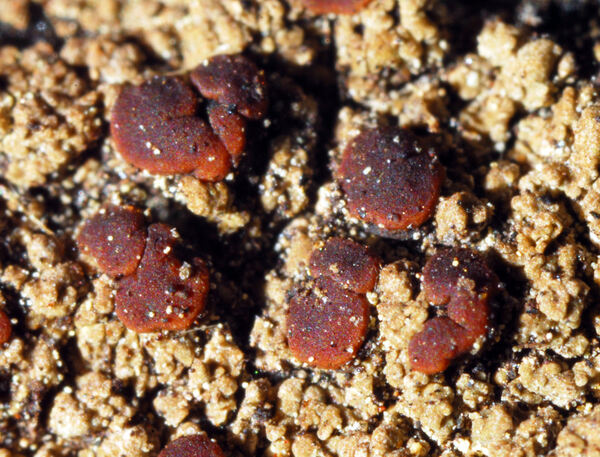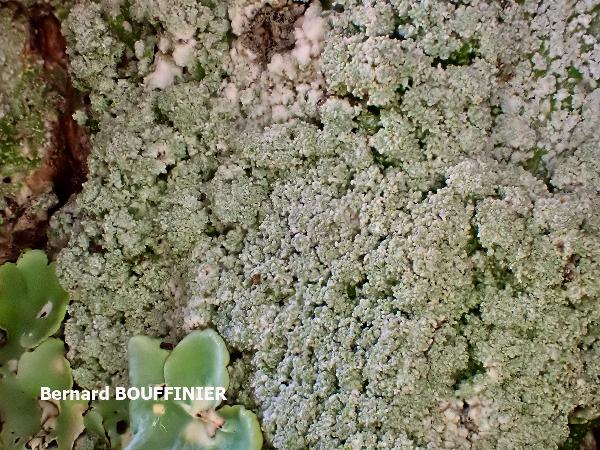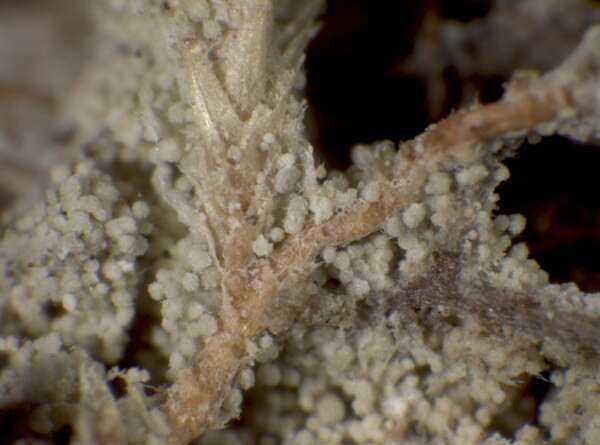Phyllopsora rosei Coppins & P. James
Lichenologist, 11: 166, 1979.
Synonyms:
Distribution: S - Cal (Puntillo 1996).
Description: Thallus crustose to minutely squamulose, esorediate, of tightly adpressed, small granules or squamules forming a pale grey- to blue-green crust to 5 cm or more in diam. Squamules at first granulose and 50-150 μm wide, then, especially in marginal parts, flattened, crenate to finger-like, 0.15-0.3 mm wide, weakly corticated, finely tomentose; prothallus whitish, cottony, sometimes obscured. Apothecia rather rare, biatorine, 0.3-1.5 mm across, often clustered, with a flat to convex or often tuberculate, pale orange- to deep red-brown, epruinose disc, and a very thin and inconspicuous, concolorous or paler proper margin. Proper exciple colourless or red-brown in section, of radially oriented, thick-walled, gelatinized hyphae; epithecium poorly differentiated, colourless or brownish; hymenium colourless, 20–30 μm high; paraphyses mostly simple, 2–3 μm thick at mid-level, the apical cell not swollen; hypothecium thick, 200–230 μm high, colourless or red-brown in parts. Asci 8-spored, clavate, surrounded by a gelatinous I+ blue coat, with a well-developed I+ blue tholus with a I+ darker blue tube and a well-developed ocular chamber, Bacidia-type. Ascospores simple or thinly 1(-3)-septate, hyaline, narrowly ellipsoid to short-fusiform, (7-)10-13(-15) x 2-3(-4) μm. Photobiont chlorococcoid. Spot tests: thallus K- or K+ faintly yellow, C-, KC-, P+ orange-red. Chemistry: thallus with argopsin. Note: a rare western European epiphytic species with humid subtropical affinities; the single Italian collection is from the acid bark of Pinus leucodermis. It is included as “Critically Endangered” in the Italian red list of epiphytic lichens (Nascimbene & al. 2013c).
Growth form: Squamulose
Substrata: bark
Photobiont: green algae other than Trentepohlia
Reproductive strategy: mainly sexual
Most common in areas with a humid-warm climate (e.g. most of Tyrrenian Italy)
Commonnes-rarity: (info)
Alpine belt: absent
Subalpine belt: absent
Oromediterranean belt: absent
Montane belt: extremely rare
Submediterranean belt: absent
Padanian area: absent
Humid submediterranean belt: extremely rare
Humid mediterranean belt: absent
Dry mediterranean belt: absent

Predictive model
Herbarium samples
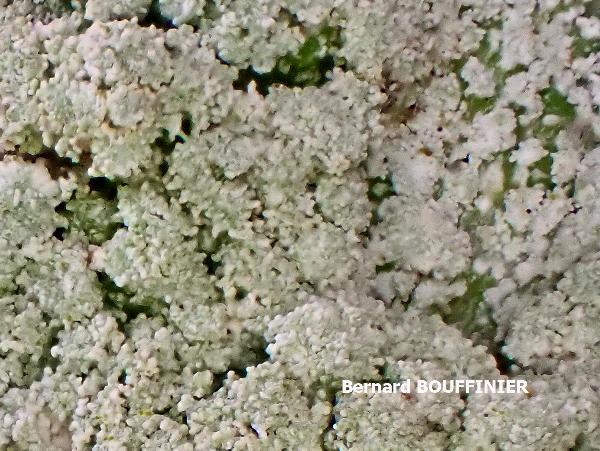
Bernard Bouffinier - Source: http://www.lichensmaritimes.org/index.php?task=fiche&lichen=1027&lang=en
France, Plogonnec

Bernard Bouffinier - Source: http://www.lichensmaritimes.org/index.php?task=fiche&lichen=1027&lang=en
France, Forêt du Cranou
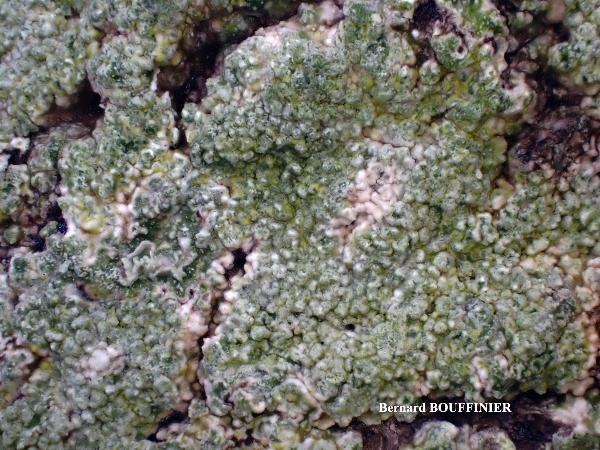
Bernard Bouffinier - Source: http://www.lichensmaritimes.org/index.php?task=fiche&lichen=1027&lang=en
France, Forêt du Cranou
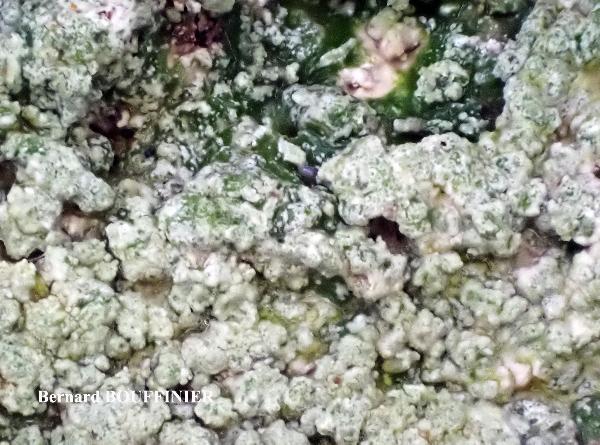
Bernard Bouffinier - Source: http://www.lichensmaritimes.org/index.php?task=fiche&lichen=1027&lang=en
France, Forêt du Cranou
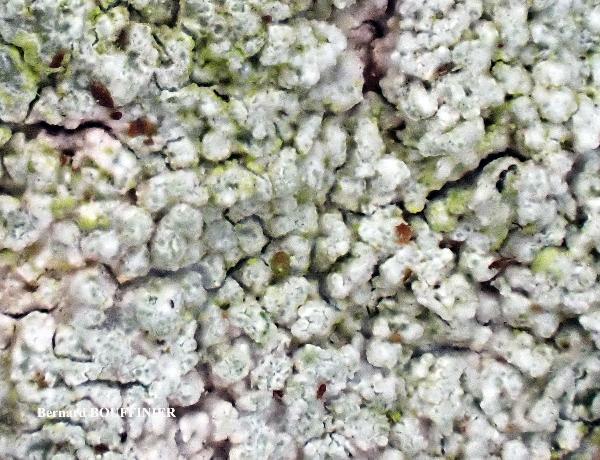
Bernard Bouffinier - Source: http://www.lichensmaritimes.org/index.php?task=fiche&lichen=1027&lang=en
France, Forêt du Cranou

Bernard Bouffinier - Source: http://www.lichensmaritimes.org/index.php?task=fiche&lichen=1027&lang=en
France, Forêt du Cranou
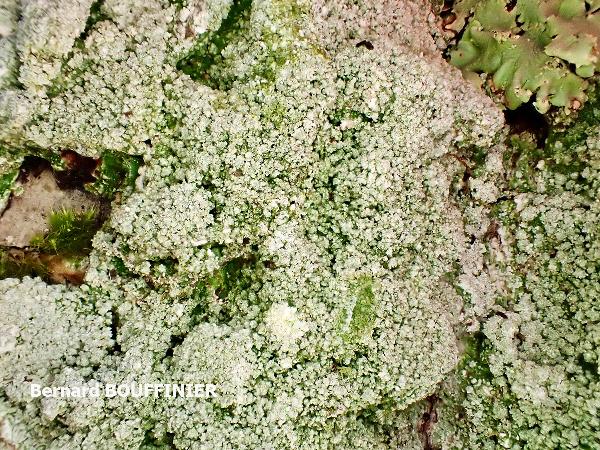
Bernard Bouffinier - Source: http://www.lichensmaritimes.org/index.php?task=fiche&lichen=1027&lang=en
France, Plogonnec
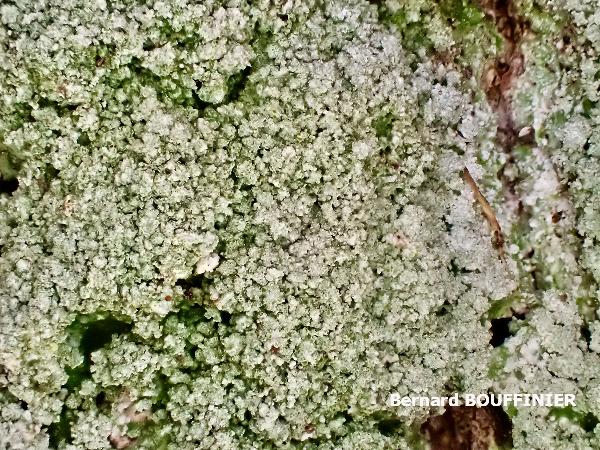
Bernard Bouffinier - Source: http://www.lichensmaritimes.org/index.php?task=fiche&lichen=1027&lang=en
France, Plogonnec
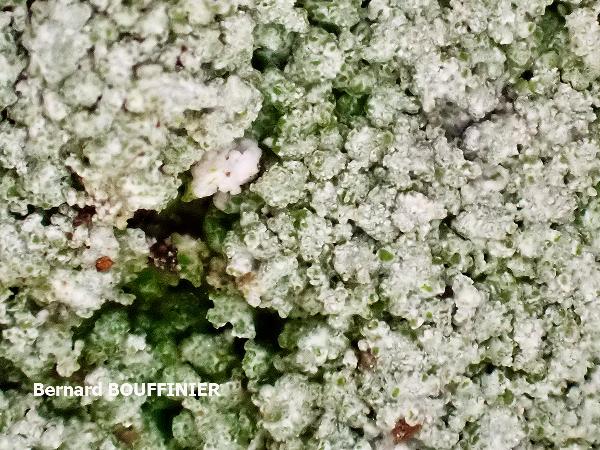
Bernard Bouffinier - Source: http://www.lichensmaritimes.org/index.php?task=fiche&lichen=1027&lang=en
France, Plogonnec
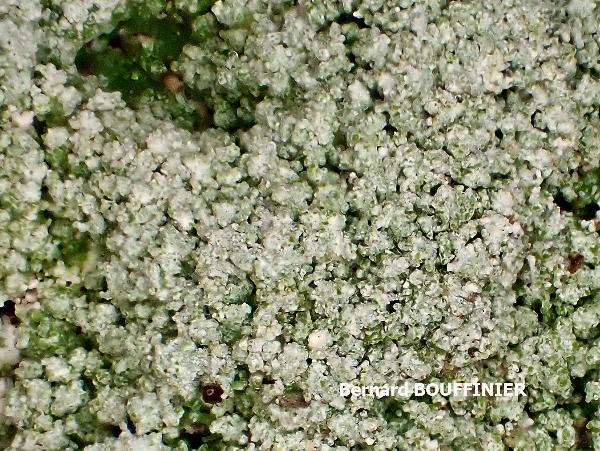
Bernard Bouffinier - Source: http://www.lichensmaritimes.org/index.php?task=fiche&lichen=1027&lang=en
France, Plogonnec
Growth form: Squamulose
Substrata: bark
Photobiont: green algae other than Trentepohlia
Reproductive strategy: mainly sexual
Most common in areas with a humid-warm climate (e.g. most of Tyrrenian Italy)
Commonnes-rarity: (info)
Alpine belt: absent
Subalpine belt: absent
Oromediterranean belt: absent
Montane belt: extremely rare
Submediterranean belt: absent
Padanian area: absent
Humid submediterranean belt: extremely rare
Humid mediterranean belt: absent
Dry mediterranean belt: absent

Predictive model
| Herbarium samples |

Bernard Bouffinier - Source: http://www.lichensmaritimes.org/index.php?task=fiche&lichen=1027&lang=en
France, Plogonnec

Bernard Bouffinier - Source: http://www.lichensmaritimes.org/index.php?task=fiche&lichen=1027&lang=en
France, Forêt du Cranou

Bernard Bouffinier - Source: http://www.lichensmaritimes.org/index.php?task=fiche&lichen=1027&lang=en
France, Forêt du Cranou

Bernard Bouffinier - Source: http://www.lichensmaritimes.org/index.php?task=fiche&lichen=1027&lang=en
France, Forêt du Cranou

Bernard Bouffinier - Source: http://www.lichensmaritimes.org/index.php?task=fiche&lichen=1027&lang=en
France, Forêt du Cranou

Bernard Bouffinier - Source: http://www.lichensmaritimes.org/index.php?task=fiche&lichen=1027&lang=en
France, Forêt du Cranou

Bernard Bouffinier - Source: http://www.lichensmaritimes.org/index.php?task=fiche&lichen=1027&lang=en
France, Plogonnec

Bernard Bouffinier - Source: http://www.lichensmaritimes.org/index.php?task=fiche&lichen=1027&lang=en
France, Plogonnec

Bernard Bouffinier - Source: http://www.lichensmaritimes.org/index.php?task=fiche&lichen=1027&lang=en
France, Plogonnec

 Index Fungorum
Index Fungorum
 GBIF
GBIF
